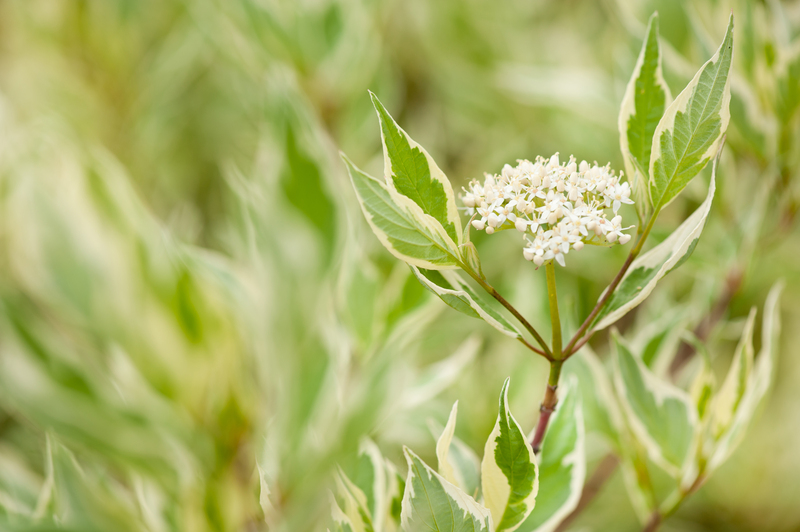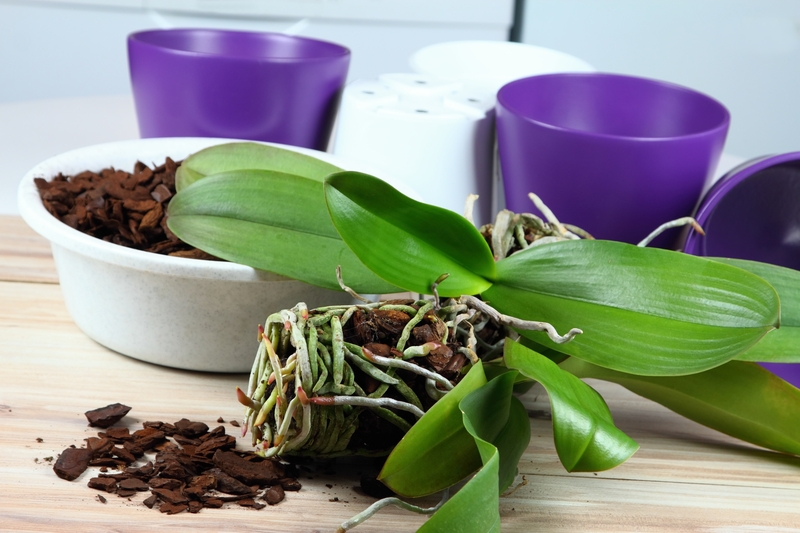Container Gardening: Urban Gardener's Dream
Posted on 28/08/2025
Container Gardening: Urban Gardener's Dream
Gardening in the city may seem challenging, but container gardening offers the perfect solution for modern urban dwellers. With a creative approach and a little planning, apartment balconies, rooftops, patios, and even window sills can transform into lush green retreats. This comprehensive guide explores container gardening, the ideal method for anyone aspiring to create an urban paradise within the constraints of limited space.
What is Container Gardening?
Container gardening is the practice of growing plants in pots, tubs, or other containers instead of directly in the ground. This technique has gained immense popularity among city dwellers for its flexibility, efficiency, and adaptability. Whether you have a tiny balcony, a sun-drenched windowsill, or a rooftop sanctuary, container gardening makes greener living accessible to anyone and everyone.

Why Container Gardening is the Ultimate Urban Gardener's Dream
- Space-Saving: Perfect for apartments, balconies, patios, and small yards where traditional gardening is impossible.
- Flexibility: Move your garden easily to chase sunlight, avoid harsh weather, or redesign your space.
- Accessibility: Ideal for gardeners with mobility issues, allowing raised arrangements that minimize bending and kneeling.
- Pest and Disease Control: Easier to manage soil quality and monitor pests compared to traditional in-ground gardens.
- Diversity: Grow a wide range of plants--herbs, vegetables, fruit, and ornamentals--even in limited areas.
- Design Freedom: Mix and match containers to reflect personal style and creativity.
The Benefits of Urban Container Gardens
Urban gardening using containers promotes not only environmental sustainability but also personal health and well-being. Here are some of its remarkable benefits:
- Improves Air Quality: Plants help clean indoor and outdoor air, reducing pollutants and providing fresh oxygen.
- Enhances Aesthetic Appeal: Vibrant containers add beauty and charm to any space, from sleek modern patios to cozy window ledges.
- Therapeutic Advantages: Gardening is proven to lower stress, boost mood, and foster mindfulness.
- Fresh Produce: Grow herbs and vegetables for a fresh, organic harvest right at home, even with no garden plot.
- Encourages Sustainability: Reduces the carbon footprint as homegrown food limits the need for transportation and packaging.
Choosing the Right Containers for Urban Gardening
Container selection is crucial for a successful urban garden. Your choice should reflect not only aesthetics but also function, size needs, and sustainability.
Types of Containers
- Terracotta and Clay Pots: Excellent breathability for roots, but can be heavy and fragile.
- Plastic Containers: Lightweight, affordable, and come in various colors and sizes; ensure they have drainage holes.
- Wooden Boxes: Eco-friendly and rustic, though they require treatment to resist rot.
- Metal Urns and Buckets: Durable and chic, but may heat up quickly in direct sunlight.
- Fabric Grow Bags: Promote aeration and prevent rootbound issues; ideal for vegetables and herbs.
- Upcycled Containers: Old teapots, crates, baskets, or tin cans creatively reused for planting.
Tip: Always ensure your containers have drainage holes to prevent root rot and overwatering.
Size Matters
The size of the container directly affects plant health. Too small and your plant may quickly become rootbound and dry out; too large and water retention may be excessive, leading to root rot. Consider the mature size of your plant and its root depth requirements. For example:
- Herbs: 6-12 inches deep containers
- Lettuce, radishes, and greens: 6-8 inches
- Tomatoes, peppers, eggplant: Minimum 14-20 inches deep and wide
Soil, Watering, and Fertilizer: Building Blocks of Lush Urban Gardens
Soil Mix for Containers
Ordinary garden soil is generally too dense for container gardening and won't provide the necessary drainage. An ideal container soil mix includes:
- High-quality potting mix: Ensures proper aeration and drainage
- Organic matter: Such as compost or worm castings for nutrients
- Perlite or vermiculite: Boosts drainage and prevents compaction
- Slow-release fertilizer: Supplies nutrients over time
Mix thoroughly before filling your containers and replenish nutrients each growing season.
Watering Strategies for Container Plants
Containers dry out faster than garden beds, so consistent watering is crucial to keep your urban container garden thriving.
- Check daily: Especially in hot or windy weather. Stick your finger into the soil; if it feels dry, water.
- Water deeply: Ensure moisture reaches all roots, not just the surface.
- Self-watering containers: Consider using these for added convenience, especially for busy gardeners.
- Mulching: A thin layer of mulch helps retain moisture and minimize evaporation.
Fertilizing Container Gardens
Plants in containers quickly exhaust soil nutrients. Fertilize regularly according to plant needs--usually every 2-4 weeks during the growing season. Choose organic fertilizers, such as compost tea, fish emulsion, or seaweed extract for safe and eco-friendly nourishment.
Best Plants for Urban Container Gardening
Not all plants are equally suited for life in pots. The best urban container plants are those that thrive in confined spaces and adapt well to the microclimates of balconies, rooftops, and windowsills.
Edible Container Garden Favorites
- Herbs: Basil, thyme, mint, parsley, cilantro, and chives are all container-friendly and thrive on sunny ledges.
- Leafy greens: Spinach, arugula, swiss chard, kale, and lettuces grow quickly and yield multiple harvests.
- Tomatoes: Especially determinate (bush) varieties suited for pots.
- Peppers and eggplant: Compact selections do well in containers.
- Radishes and carrots: Choose shorter, rounder varieties for small pots.
- Strawberries: Attractive as well as delicious, thriving in hanging baskets or window boxes.
Beautiful Ornamentals for Urban Containers
- Petunias and geraniums: Robust bloomers perfect for sunny balconies.
- Begonias and impatiens: Excellent for shady spots.
- Ornamental grasses: Add movement and texture to your small space.
- Succulents: Low-maintenance and ideal for hot, sunny rooftops.
- Dwarf evergreens: Provide year-round structure and color.
Fruits in Containers
Did you know? Many fruit species can be cultivated successfully in containers:
- Lemon, lime, or fig trees: Dwarf varieties thrive in large pots and add a Mediterranean flair.
- Blueberries: Require acidic potting soil but reward with delicious berries.
- Strawberries: As mentioned, perfect in hanging baskets or shallow troughs.
Planning and Designing Your Urban Container Garden
A thoughtful plan transforms a random collection of pots into a cohesive, beautiful garden. Consider the following steps for design success:
- Analyze your light: Know which areas get full sun ("6+ hours"), part shade, or full shade.
- Group plants by needs: Place together those sharing similar water and light requirements.
- Use vertical space: Incorporate shelves, trellises, and hanging baskets to maximize your area.
- Add visual interest: Combine different heights, colors, and textures for a dynamic display.
- Consider accessibility: Make sure containers are easy to reach for watering and harvesting.
- Rotate crops and containers: This helps manage pests and creates seasonal variety.
Creative Urban Gardening Ideas
- Vertical planters: Mount on walls or railings for growing herbs, succulents, or flowers without taking up floor space.
- Pallet gardens: Re-purpose wooden pallets as rustic, stylish planters.
- Herb towers: Stack pots for a cascading, space-efficient herb garden.
- Recycled containers: Transform old buckets, colanders, or even shoes into quirky urban plant pots!
- Water features: Mini pond in a barrel or container adds tranquility and can provide habitat for wildlife.
Seasonal Care and Maintenance for Container Gardens
Urban container gardening has its own set of seasonal challenges and maintenance tips:
Spring and Summer
- Fertilize regularly: to support rapid growth.
- Pest monitoring: Watch for aphids, whiteflies, and spider mites.
- Deadhead flowers: For continuous blooming of ornamentals.
- Mulch to conserve water: Especially in hot locales.
Fall
- Harvest remaining crops: before first frost.
- Cut back annuals: and compost old plants.
- Plant cool-weather crops: like leafy greens in mild climates.
Winter
- Move delicate plants indoors: or insulate outdoor containers with bubble wrap or straw.
- Reduce watering: as plant needs drop.
- Clean and sterilize containers: before next year's planting.
Common Challenges in Urban Container Gardening (and How to Overcome Them)
Every urban gardener encounters a few obstacles. Here are solutions to the most common container gardening challenges:
- Limited sunlight: Choose shade-tolerant plants or use reflective surfaces to amplify light.
- Wind exposure: Group containers for protection or use screens and rails.
- Overcrowding: Avoid stuffing too many plants in one pot to prevent competition for resources.
- Pest issues: Act quickly using organic pest solutions like neem oil or insecticidal soap.
- Heavy containers: Use lighter materials (plastic, composite) or invest in wheeled pot trolleys.
- Watering when away: Consider mulch, self-watering pots, or seeking help from a friend or neighbor.
Container Gardening: Sustainable and Green Urban Living
Container gardening is not just a practical solution for lack of space--it's a vital component of sustainable urban living. By growing food and flowers at home, city dwellers reduce their need for store-bought goods, cut down on waste, and create habitats for birds, bees, and butterflies. Whether you dream of a thriving balcony vegetable garden or a rooftop oasis bursting with blooms, the possibilities are endless.

Getting Started: Step-by-Step Urban Container Gardening Guide
- Assess your space: Identify potential spots for your containers--balcony, windowsill, patio, or rooftop.
- Choose appropriate containers: Select based on size, style, and intended use.
- Fill with quality soil mix: Use a recommended blend for healthy roots.
- Select plants: Match your plant choices to available light and season.
- Arrange containers strategically: Consider aesthetics, sun exposure, and ease of care.
- Plant and water thoroughly: Water deeply after transplanting and settle your soil.
- Maintain regularly: Consistent watering, feeding, and tidying will keep your garden looking its best.
Conclusion: Embrace the Urban Gardener's Dream
Container gardening truly is the urban gardener's dream, offering incredible flexibility, accessibility, and the ability to nurture vibrant life in the most compact city nooks. With thoughtful plant selection, attentive care, and a touch of creativity, anyone--regardless of space--can enjoy the beauty and bounty of a personal garden. So, pick up a pot, plant a seed, and watch your urban paradise bloom!
Start your journey into container gardening today and turn your city space into a thriving, green oasis!

